 Improving Adolescent Literacy This page intentionally left blank
Improving Adolescent Literacy This page intentionally left blank Improving Adolescent Literacy Content Area Strategies at Work Third Edition Douglas Fisher San Diego State University Nancy Frey San Diego State University Boston Columbus Indianapolis New York San Francisco Upper Saddle River Amsterdam Cape Town Dubai London Madrid Milan Munich Paris Montreal Toronto Delhi Mexico City Sa ~o Paulo Sydney Hong Kong Seoul Singapore Taipei Tokyo Vice President and Editor-in-Chief: Aurora Martnez Ramos Editorial Assistant: Meagan French Project Manager: Barbara Strickland Marketing Manager: Danae April Production Editor: Janet Domingo Editorial Production Service: S4Carlisle Publishing Services Manufacturing Buyer: Megan Cochran Electronic Composition: S4Carlisle Publishing Services Interior Design: S4Carlisle Publishing Services Photo Researcher: Annie Pickert Cover Designer: Elena Sidorova Credits and acknowledgments borrowed from other sources and reproduced, with permission, in this textbook appear on appropriate page within text. Copyright 2012, 2008, 2004 Pearson Education, Inc., publishing as Allyn & Bacon, 501 Boylston Street, Boston,MA, 02116. All rights reserved. Manufactured in the United States of America. This publication is protected by Copyright, and permission should be obtained from the publisher prior to any prohibited reproduction, storage in a retrieval system, or transmission in any form or by any means, electronic, mechanical, photocopying, recording, or likewise. To obtain permission(s) to use material from this work, please submit a written request to Pearson Education, Inc., Permissions Department, 501 Boylston Street, Boston, MA, 02116, or email permissionsus@pearson .com. p. cm. cm.
Improving Adolescent Literacy Content Area Strategies at Work Third Edition Douglas Fisher San Diego State University Nancy Frey San Diego State University Boston Columbus Indianapolis New York San Francisco Upper Saddle River Amsterdam Cape Town Dubai London Madrid Milan Munich Paris Montreal Toronto Delhi Mexico City Sa ~o Paulo Sydney Hong Kong Seoul Singapore Taipei Tokyo Vice President and Editor-in-Chief: Aurora Martnez Ramos Editorial Assistant: Meagan French Project Manager: Barbara Strickland Marketing Manager: Danae April Production Editor: Janet Domingo Editorial Production Service: S4Carlisle Publishing Services Manufacturing Buyer: Megan Cochran Electronic Composition: S4Carlisle Publishing Services Interior Design: S4Carlisle Publishing Services Photo Researcher: Annie Pickert Cover Designer: Elena Sidorova Credits and acknowledgments borrowed from other sources and reproduced, with permission, in this textbook appear on appropriate page within text. Copyright 2012, 2008, 2004 Pearson Education, Inc., publishing as Allyn & Bacon, 501 Boylston Street, Boston,MA, 02116. All rights reserved. Manufactured in the United States of America. This publication is protected by Copyright, and permission should be obtained from the publisher prior to any prohibited reproduction, storage in a retrieval system, or transmission in any form or by any means, electronic, mechanical, photocopying, recording, or likewise. To obtain permission(s) to use material from this work, please submit a written request to Pearson Education, Inc., Permissions Department, 501 Boylston Street, Boston, MA, 02116, or email permissionsus@pearson .com. p. cm. cm.
Includes bibliographical references. ISBN-13: 978-0-13-248712-2 ISBN-10: 0-13-248712-8 1. Reading (Secondary) 2. Content area reading. I. Title. Title.
LB1632.F57 2011 428.4071'2dc22 2010050630 10 9 8 7 6 5 4 3 2 1 [EDW] 15 14 13 12 11 ISBN-10: 0-13-248712-8 www.pearsonhighered.com ISBN-13: 978-0-13-248712-2  Brief Contents Chapter 1: Ensuring All Students Read, Write, and Think Chapter 2: Setting the Stage: Building Background Through Anticipatory Activities Chapter 3: Word for Word: Vocabulary Development Across the Curriculum Chapter 4: Well Read: Promoting Comprehension Through Read Alouds and Shared Readings Chapter 5: Why Ask? Questioning Strategies in the Classroom Chapter 6: Picture This: Graphic Organizers in the Classroom Chapter 7: Getting It Down: Making and Taking Notes Across the Curriculum Chapter 8: Powerful Pens: Writing to Learn With Adolescents Chapter 9: Taking Stock: Standards, Assessment, and High-Stakes Testing References Index vThis page intentionally left blank
Brief Contents Chapter 1: Ensuring All Students Read, Write, and Think Chapter 2: Setting the Stage: Building Background Through Anticipatory Activities Chapter 3: Word for Word: Vocabulary Development Across the Curriculum Chapter 4: Well Read: Promoting Comprehension Through Read Alouds and Shared Readings Chapter 5: Why Ask? Questioning Strategies in the Classroom Chapter 6: Picture This: Graphic Organizers in the Classroom Chapter 7: Getting It Down: Making and Taking Notes Across the Curriculum Chapter 8: Powerful Pens: Writing to Learn With Adolescents Chapter 9: Taking Stock: Standards, Assessment, and High-Stakes Testing References Index vThis page intentionally left blank Contents viiviiiContentsContentsixxContentsNOTE: Every effort has been made to provide accurate and current Internet information in this book. However, the Internet and information posted on it are constantly changing, so it is inevitable that some of the Internet addresses listed in this textbook will change.
Contents viiviiiContentsContentsixxContentsNOTE: Every effort has been made to provide accurate and current Internet information in this book. However, the Internet and information posted on it are constantly changing, so it is inevitable that some of the Internet addresses listed in this textbook will change.  Middle and high school teachers across the curriculum face the challenge of helping their students comprehend their subject area texts, which can be particularly difficult for those students who lack the literacy skills to succeed academically. This urgent challenge means that reading, writing, and thinking must be developed in every middle school and secondary classroom. We believe that its you, the middle school or secondary teacher, who can make a difference in student success. For this reason, we offer this concise text with key strategies that will allow you to develop the literacy skills students need to comprehend course content, no matter what content area or elective you teach.
Middle and high school teachers across the curriculum face the challenge of helping their students comprehend their subject area texts, which can be particularly difficult for those students who lack the literacy skills to succeed academically. This urgent challenge means that reading, writing, and thinking must be developed in every middle school and secondary classroom. We believe that its you, the middle school or secondary teacher, who can make a difference in student success. For this reason, we offer this concise text with key strategies that will allow you to develop the literacy skills students need to comprehend course content, no matter what content area or elective you teach.
New to This Edition This decade has been an exciting one for those interested in adolescent literacy issues. The field emerged in the 1970s with the work of Hal Herber and his associates, who developed the field of content area reading and writing. In its early days, content area literacy was conceived as an approach that infused specific strategies into instruction when possible. In turn, this was expanded through the Writing Across the Curriculum movement that began in colleges and filtered to middle and high school classes. What has become clear in this decade is that adolescent literacy is not an add-on to content instruction, but is central to learning. This edition seeks to incorporate this stance.
Here are changes that you can look forward to in this book: 1. Guidance for developing literacy skills with English learners. In addition to specifically identifying why a specific instructional routine or procedure would be helpful for English learners, we have added new scenarios to profile students developing proficiency in English. 2. Focus on readers who struggle. In each chapter, we call out specific information about readers who struggle. Taken together, these key points help teachers consider the perspective of readers who struggle and what can be done to accelerate their achievements. 3. New classroom examples. In each chapter, we have new examples from our own teaching and our co-workers teaching at Health Sciences High School. New classroom examples. In each chapter, we have new examples from our own teaching and our co-workers teaching at Health Sciences High School.
These examples include the use of technology and media. xixiiPreface 4. Updated research base. Although the tried and true structure of this book remains the same and we continue to focus on the same core ideas that were presented in the first edition, we have updated the research base for each of the chapters, providing readers with current sources of support and additional reading. 5. Assessment chapter revisions. We have also revised the assessment chapter to provide readers with additional information about the current state of formal and informal assessments and how they can be used in the classroom. Specifically, we have added a section on feed forward, which provides information about using assessment information to guide instruction.
Text Organization This book is organized into nine chapters. In chapter 1 we introduce critical goals for adolescent literacy and a rationale for your involvement in improving adolescents access to literacy. We also introduce a number of grouping and instructional strategies useful in engaging all students in their own learning. Chapters 2 through 8 present sound, core instructional strategies that de velop lifelong literacy skills and allow students to access text. The purpose of each of these key strategies is to enhance students comprehension of the contentthe ultimate goal of all educatorsand develop students access to vocabulary. The core strategies covered in chapters 28 include: Anticipatory activities Vocabulary instruction Read alouds and shared reading Questioning Graphic organizers Notetaking and notemaking Writing to learn Each of these chapters opens with a vignette, modeling how the instructional strategy is implemented in an actual adolescent classroom.
Next page
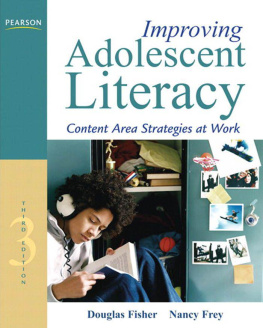
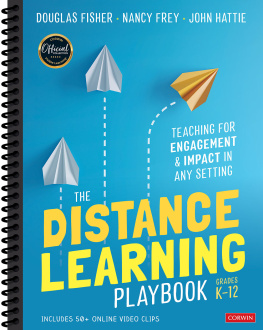
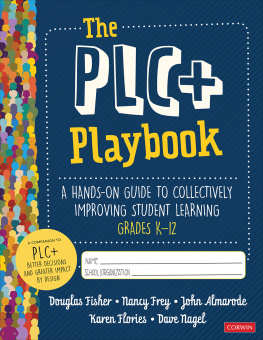

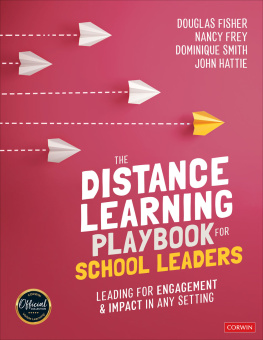
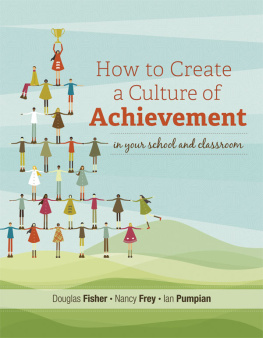
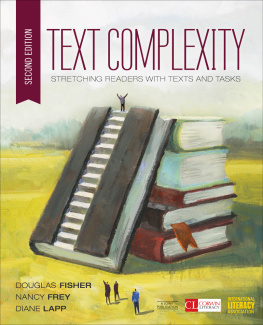
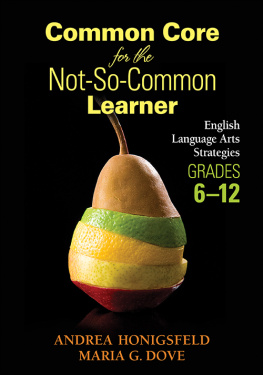
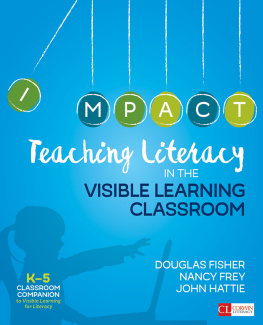
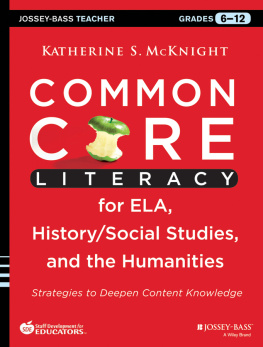
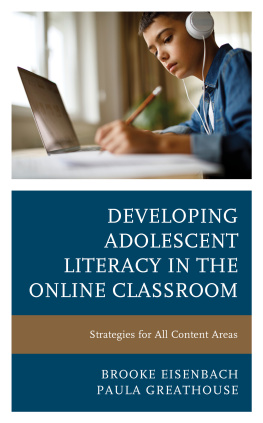


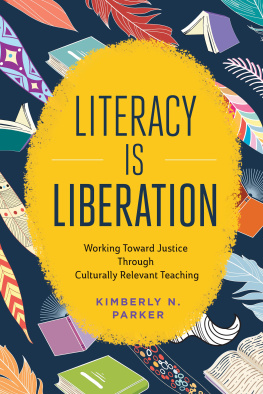

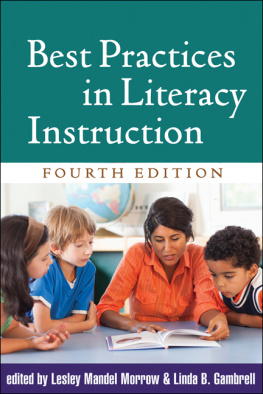
 Improving Adolescent Literacy This page intentionally left blank
Improving Adolescent Literacy This page intentionally left blank Improving Adolescent Literacy Content Area Strategies at Work Third Edition Douglas Fisher San Diego State University Nancy Frey San Diego State University Boston Columbus Indianapolis New York San Francisco Upper Saddle River Amsterdam Cape Town Dubai London Madrid Milan Munich Paris Montreal Toronto Delhi Mexico City Sa ~o Paulo Sydney Hong Kong Seoul Singapore Taipei Tokyo Vice President and Editor-in-Chief: Aurora Martnez Ramos Editorial Assistant: Meagan French Project Manager: Barbara Strickland Marketing Manager: Danae April Production Editor: Janet Domingo Editorial Production Service: S4Carlisle Publishing Services Manufacturing Buyer: Megan Cochran Electronic Composition: S4Carlisle Publishing Services Interior Design: S4Carlisle Publishing Services Photo Researcher: Annie Pickert Cover Designer: Elena Sidorova Credits and acknowledgments borrowed from other sources and reproduced, with permission, in this textbook appear on appropriate page within text. Copyright 2012, 2008, 2004 Pearson Education, Inc., publishing as Allyn & Bacon, 501 Boylston Street, Boston,MA, 02116. All rights reserved. Manufactured in the United States of America. This publication is protected by Copyright, and permission should be obtained from the publisher prior to any prohibited reproduction, storage in a retrieval system, or transmission in any form or by any means, electronic, mechanical, photocopying, recording, or likewise. To obtain permission(s) to use material from this work, please submit a written request to Pearson Education, Inc., Permissions Department, 501 Boylston Street, Boston, MA, 02116, or email permissionsus@pearson .com. p. cm. cm.
Improving Adolescent Literacy Content Area Strategies at Work Third Edition Douglas Fisher San Diego State University Nancy Frey San Diego State University Boston Columbus Indianapolis New York San Francisco Upper Saddle River Amsterdam Cape Town Dubai London Madrid Milan Munich Paris Montreal Toronto Delhi Mexico City Sa ~o Paulo Sydney Hong Kong Seoul Singapore Taipei Tokyo Vice President and Editor-in-Chief: Aurora Martnez Ramos Editorial Assistant: Meagan French Project Manager: Barbara Strickland Marketing Manager: Danae April Production Editor: Janet Domingo Editorial Production Service: S4Carlisle Publishing Services Manufacturing Buyer: Megan Cochran Electronic Composition: S4Carlisle Publishing Services Interior Design: S4Carlisle Publishing Services Photo Researcher: Annie Pickert Cover Designer: Elena Sidorova Credits and acknowledgments borrowed from other sources and reproduced, with permission, in this textbook appear on appropriate page within text. Copyright 2012, 2008, 2004 Pearson Education, Inc., publishing as Allyn & Bacon, 501 Boylston Street, Boston,MA, 02116. All rights reserved. Manufactured in the United States of America. This publication is protected by Copyright, and permission should be obtained from the publisher prior to any prohibited reproduction, storage in a retrieval system, or transmission in any form or by any means, electronic, mechanical, photocopying, recording, or likewise. To obtain permission(s) to use material from this work, please submit a written request to Pearson Education, Inc., Permissions Department, 501 Boylston Street, Boston, MA, 02116, or email permissionsus@pearson .com. p. cm. cm. Brief Contents Chapter 1: Ensuring All Students Read, Write, and Think Chapter 2: Setting the Stage: Building Background Through Anticipatory Activities Chapter 3: Word for Word: Vocabulary Development Across the Curriculum Chapter 4: Well Read: Promoting Comprehension Through Read Alouds and Shared Readings Chapter 5: Why Ask? Questioning Strategies in the Classroom Chapter 6: Picture This: Graphic Organizers in the Classroom Chapter 7: Getting It Down: Making and Taking Notes Across the Curriculum Chapter 8: Powerful Pens: Writing to Learn With Adolescents Chapter 9: Taking Stock: Standards, Assessment, and High-Stakes Testing References Index vThis page intentionally left blank
Brief Contents Chapter 1: Ensuring All Students Read, Write, and Think Chapter 2: Setting the Stage: Building Background Through Anticipatory Activities Chapter 3: Word for Word: Vocabulary Development Across the Curriculum Chapter 4: Well Read: Promoting Comprehension Through Read Alouds and Shared Readings Chapter 5: Why Ask? Questioning Strategies in the Classroom Chapter 6: Picture This: Graphic Organizers in the Classroom Chapter 7: Getting It Down: Making and Taking Notes Across the Curriculum Chapter 8: Powerful Pens: Writing to Learn With Adolescents Chapter 9: Taking Stock: Standards, Assessment, and High-Stakes Testing References Index vThis page intentionally left blank Contents viiviiiContentsContentsixxContentsNOTE: Every effort has been made to provide accurate and current Internet information in this book. However, the Internet and information posted on it are constantly changing, so it is inevitable that some of the Internet addresses listed in this textbook will change.
Contents viiviiiContentsContentsixxContentsNOTE: Every effort has been made to provide accurate and current Internet information in this book. However, the Internet and information posted on it are constantly changing, so it is inevitable that some of the Internet addresses listed in this textbook will change.  Middle and high school teachers across the curriculum face the challenge of helping their students comprehend their subject area texts, which can be particularly difficult for those students who lack the literacy skills to succeed academically. This urgent challenge means that reading, writing, and thinking must be developed in every middle school and secondary classroom. We believe that its you, the middle school or secondary teacher, who can make a difference in student success. For this reason, we offer this concise text with key strategies that will allow you to develop the literacy skills students need to comprehend course content, no matter what content area or elective you teach.
Middle and high school teachers across the curriculum face the challenge of helping their students comprehend their subject area texts, which can be particularly difficult for those students who lack the literacy skills to succeed academically. This urgent challenge means that reading, writing, and thinking must be developed in every middle school and secondary classroom. We believe that its you, the middle school or secondary teacher, who can make a difference in student success. For this reason, we offer this concise text with key strategies that will allow you to develop the literacy skills students need to comprehend course content, no matter what content area or elective you teach.